
Vilnius to Riga to Tallinn by Train
The new, slow and scenic route across the Baltics, making a small bit of history along the way.
Introduction
It’s been a good few years for rail travellers in the Baltics. Since late December 2023, Lithuanian rail operator LTG Link has run a daily roundtrip direct service between Vilnius and Riga, which has been well received welcoming nearly 62,000 passengers in its first year. Then in January 2025 Lithuanian, Latvian, and Estonian operators launched a coordinated service to link their nations’ three capitals (Vilnius, Riga, and Tallinn) in one ten-hour trip. A Tartu to Riga service is set to launch in the summer of 2025, and I was fortunate enough to witness a little bit of rail history travelling from Riga to Valga.
I took this journey in early February 2025, less than a month after it launched, and found the service to be well-run and comfortable. This review will cover the schedule, costs, and detail the seats and on-board comfort of each train I took.
Route, Schedule, and Tickets
This is not a direct service; that should hopefully come in the early 2030s with Rail Baltica. It is actually three trains, timed to connect with each other with around 20 minutes’ wait time between each. Tickets need to be purchased individually for each train, from the operator of each. This can all be done online and tickets shown on your phone.
The first leg is the above-mentioned Vilnius to Riga run, operated by LTG Link. The once-daily service leaves Vilnius at 07:05, scheduled to arrive in Riga at 11:04, travel time four hours. Tickets cost a fixed €24 in second class, €34 in first, with the latter also including a bottle of still or sparkling water, tea or coffee, and a brownie on board. Seat reservation is included in the fare, and anyone travelling on a rail pass must pay a separate fee to reserve a seat. This is possible on board unless the train is fully booked.
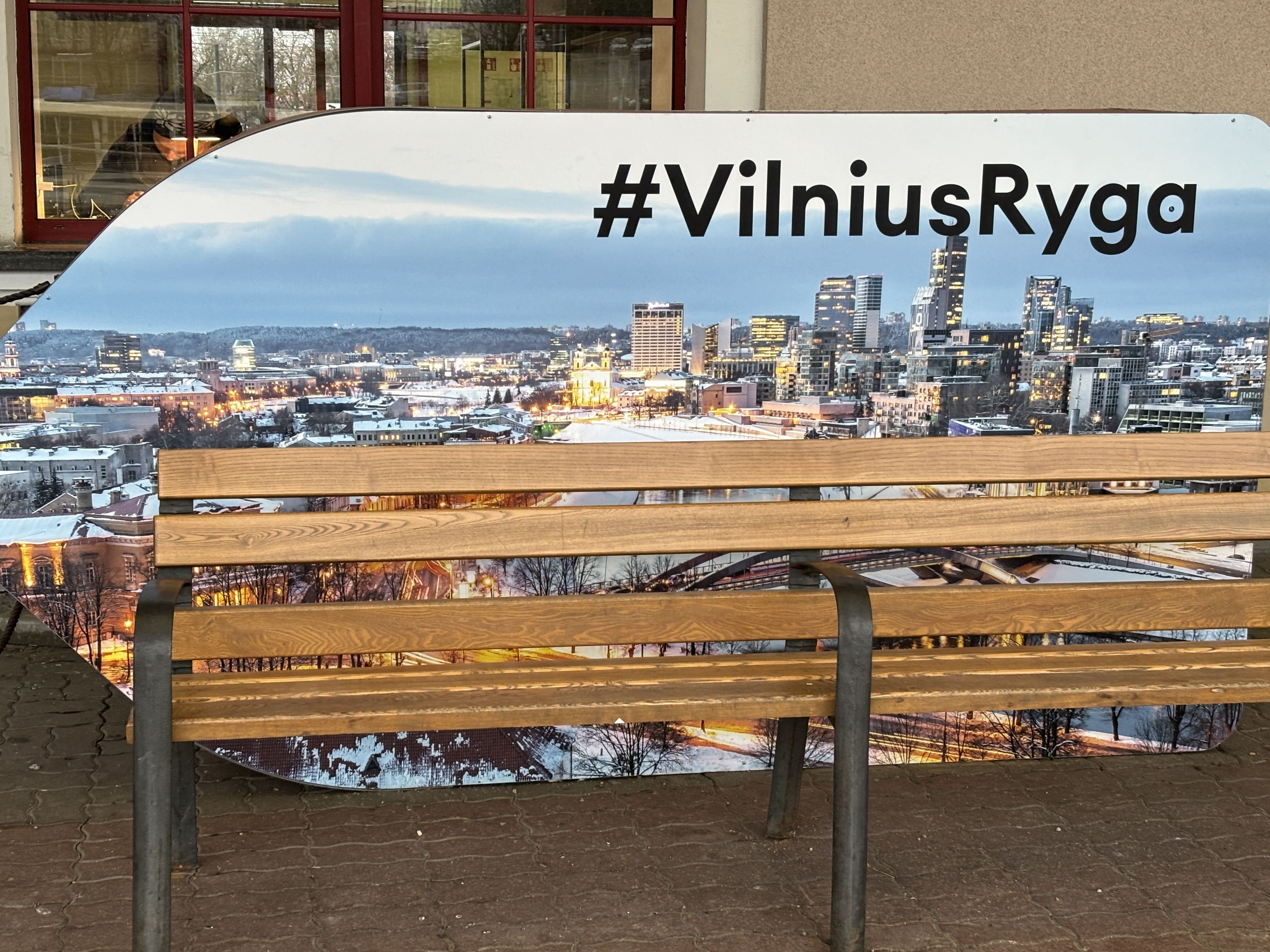
At Vilnius Station, the new daily connection to Riga is well advertised and popular with day-trippers.
The service is timed such that it allows day trips from Vilnius to Riga, with the return journey leaving at 16:55.
The LTG Link service connects with a Riga to Valga train run by Latvian operator Vivi, departing at 11:16 and arriving just across the Estonian border at 13:51. Fare €7, purchase online or at the station, fixed price. Purchasing on board is also possible. There are no assigned seats and all seats are second class.
Valga marks the halfway point of the journey, with Vilnius- and Tallinn-bound passengers leaving at the same time: the Riga service stays only a few minutes in Valga before making the return trip at 14:11 (Google Maps shows the wrong time, be careful not to wander too far from the station), and a service to Tallinn departing at 14:10.
This third and final leg, operated by Estonian carrier and knock-off Tesla founder Elron, costs €21.38 in second class (€22.50 purchased on board) and €25.46 in first without any additional service, just slightly better seats. It arrives in Tallinn at 17:34, for a total journey time from Vilnius including connections of ten hours, 29 minutes, crossing three countries by three trains covering over 600 kilometres.
Where to Book
- Vilnius <-> Riga: https://ltglink.lt/en up to 30 days in advance
- Riga <-> Valga: https://vivi.lv/en/ up to 10 days in advance, or on board
- Valga <-> Tallinn: https://elron.ee/en up to 14 days in advance, or on board (advance booking required for first class)
Breaking up the Journey
Since this isn’t one ticket but three, travellers are free to stop off along the way. I opted to spend a night in Riga, continuing the next day, and also a few hours in Tartu, Estonia’s second city. If you want to make the journey in a single day your best options for extended stops will be in Estonia: there is only one daily service each way between Vilnius and Riga, and two between Riga and Valga. Within Estonia multiple trains regularly link Tallinn with Tartu and Valga, giving you options to break up the trip.
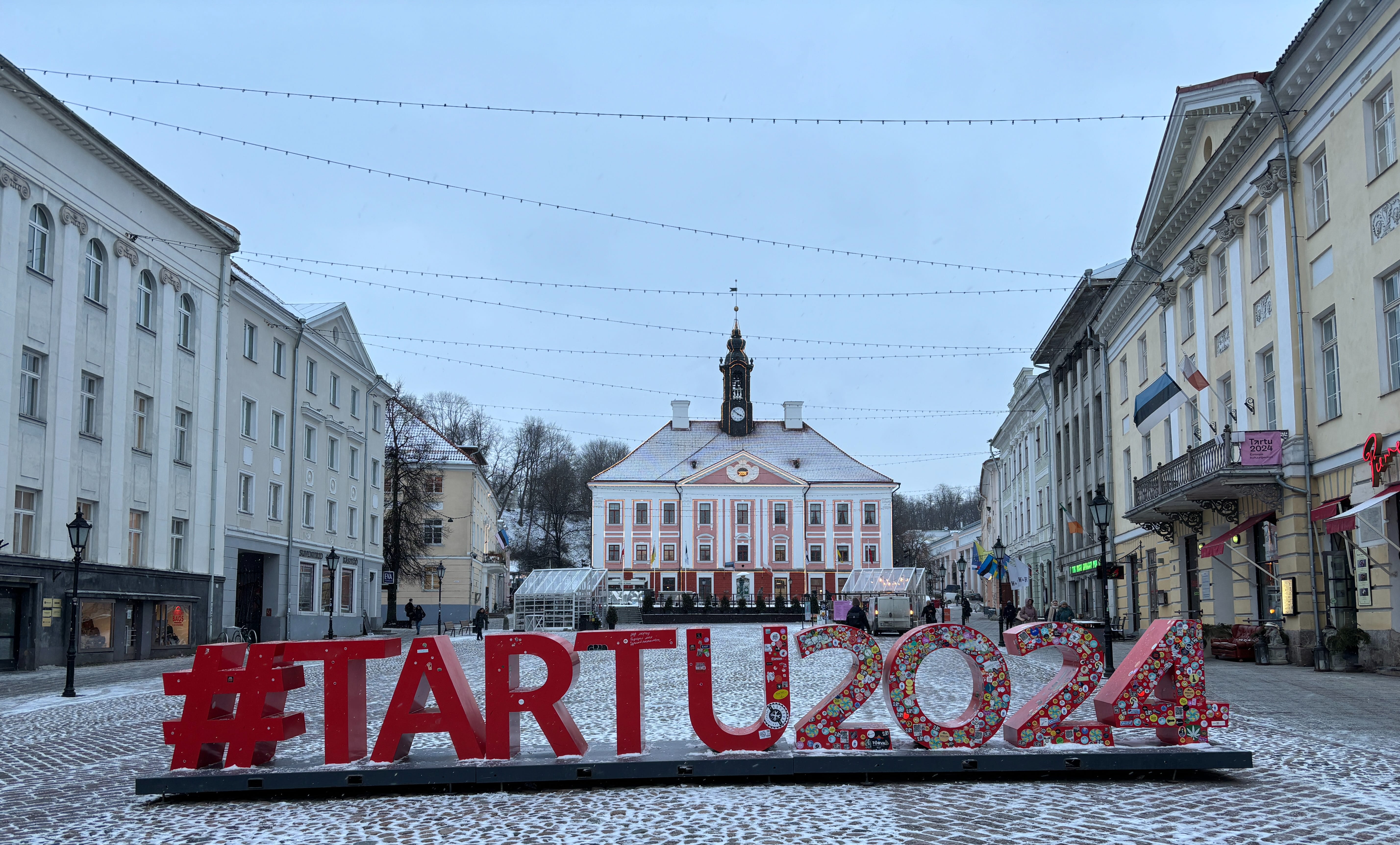
Tartu, Estonia's second-largest city, is well worth the stop.
During each of the short stops at Riga and Valga you’ll have enough time to stretch your legs, with Riga station having plentiful food and drink options. There are no vendors at Valga station.
Train #1: Vilnius to Riga
My trans-Baltic journey got underway on an early, snowy morning in Vilnius. The central station is easily accessible by foot or transit from anywhere near the Old City, and I got there around ten minutes before departure. This is the only one of the four trains I’d be taking on this trip to have assigned seats, and I soon settled in to my forward-facing window seat. I booked my ticket about two weeks in advance, fare €24. Bookings open 30 days in advance, ticket price does not change closer to departure though since all seats are assigned, it is possible for this train to sell out.
Seats on these LTG Link PESA 730 trains are arranged 2-2 in both second and first class, with some groups of four separated by a table. When booking online you will have the choice of any free seat in your chosen class, displayed on a seat map just like booking a flight. Seats were comfortable, with a footrest at each, a 230 volt outlet between each seat pair, and free and fast WiFi available throughout the journey including across the border in Latvia.
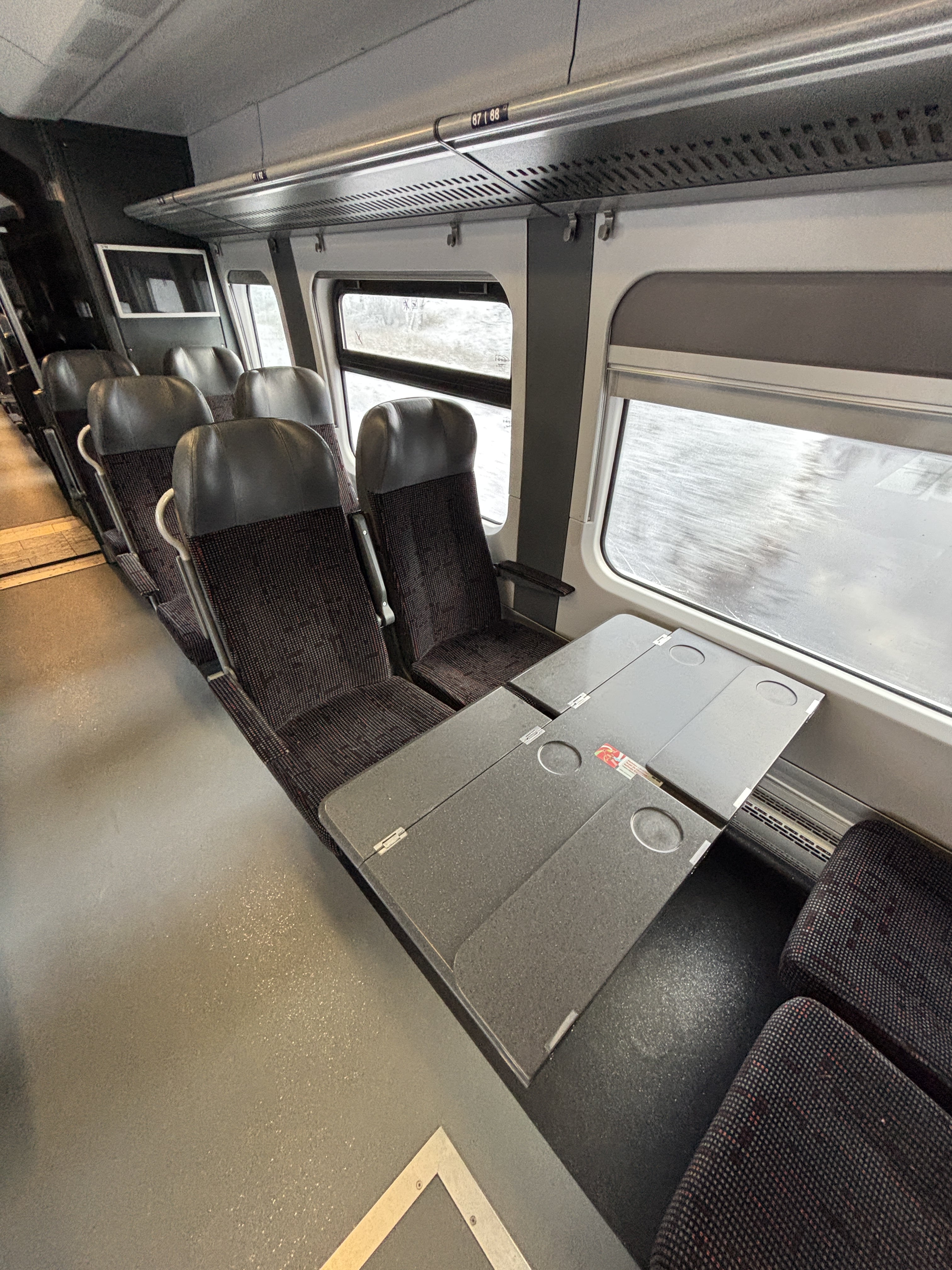
Padded seats arranged 2-2, some sharing a centre table, are offered in both first and second class.
We got underway right on time at 07:05 and an attendant soon came through to verify tickets and seat assignments. Passengers travelling on a rail pass who did not reserve online will be asked to pay €8 for a seat reservation.
The service makes seven stops between Vilnius and Riga, six in Lithuania and one (Jelgava) in Latvia. About half the passengers on board got off at one of these intermediate stops, with Šiauliai being the most popular station en route. We picked up a ten minute delay here, and staff made regular announcements at subsequent stops updating passengers on our delay. Announcements are in both Lithuanian and English.
Attendants regularly pass by offering a food and drink service at reasonable prices: a cappuccino for example is €3, which isn’t much more than you’d pay at an average Vilnius café. Thoughtfully, there’s also service for furry companions: two water bowls are placed next to the washroom in the middle of the train. It is possible to bring pets all the way to Tallinn, though not in first class where it is offered.
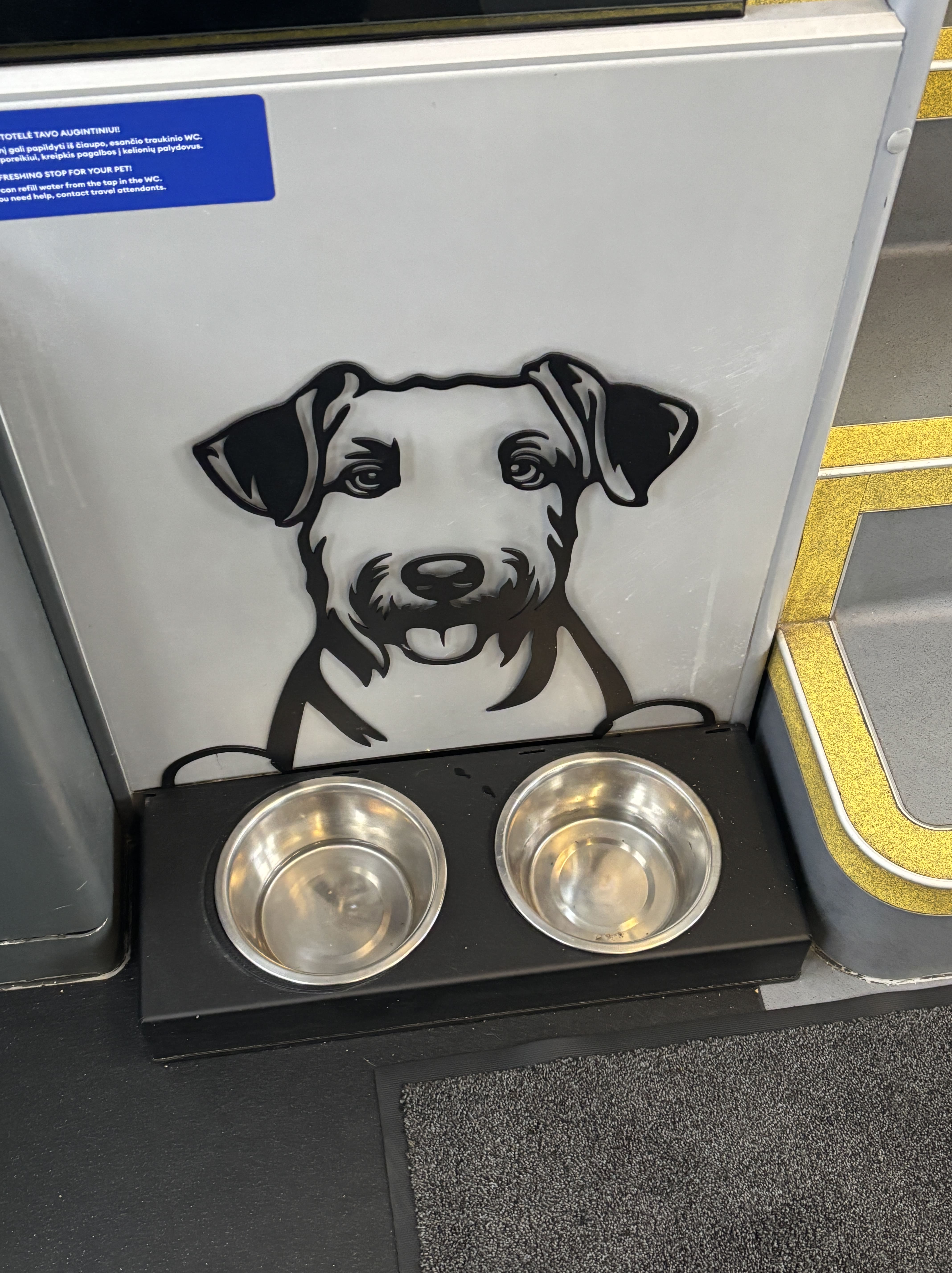
Four-legged friends won't go thirsty on LTG Link.
The border crossing is marked by two small posts. With Lithuania, Latvia, and Estonia all being Schengen area members, no border controls take place at any point on this rail journey.
We pulled into Riga at 11:07, having kept the ten minute delay. Interestingly no announcements were made on board about connecting on to Valga/Tallinn, though there were announcements from staff at Riga station. The Valga-bound train, an older DR1A unit, was dutifully waiting for onward passengers at an adjacent platform.
Total travel time so far, including delay: four hours and two minutes, fare €24.
Train #2: Riga to Valga
After spending a day exploring Riga’s historic old town, I made my way back to the central station for the 11:16 service to Valga, just in time to see the inbound train from Vilnius—running right on time today. I had purchased my ticket the day before at the station, fare €7. You can also book online or buy on board from an attendant. Second class seats only, and bookings open ten days in advance. The fare does not change closer to departure and the train cannot sell out.
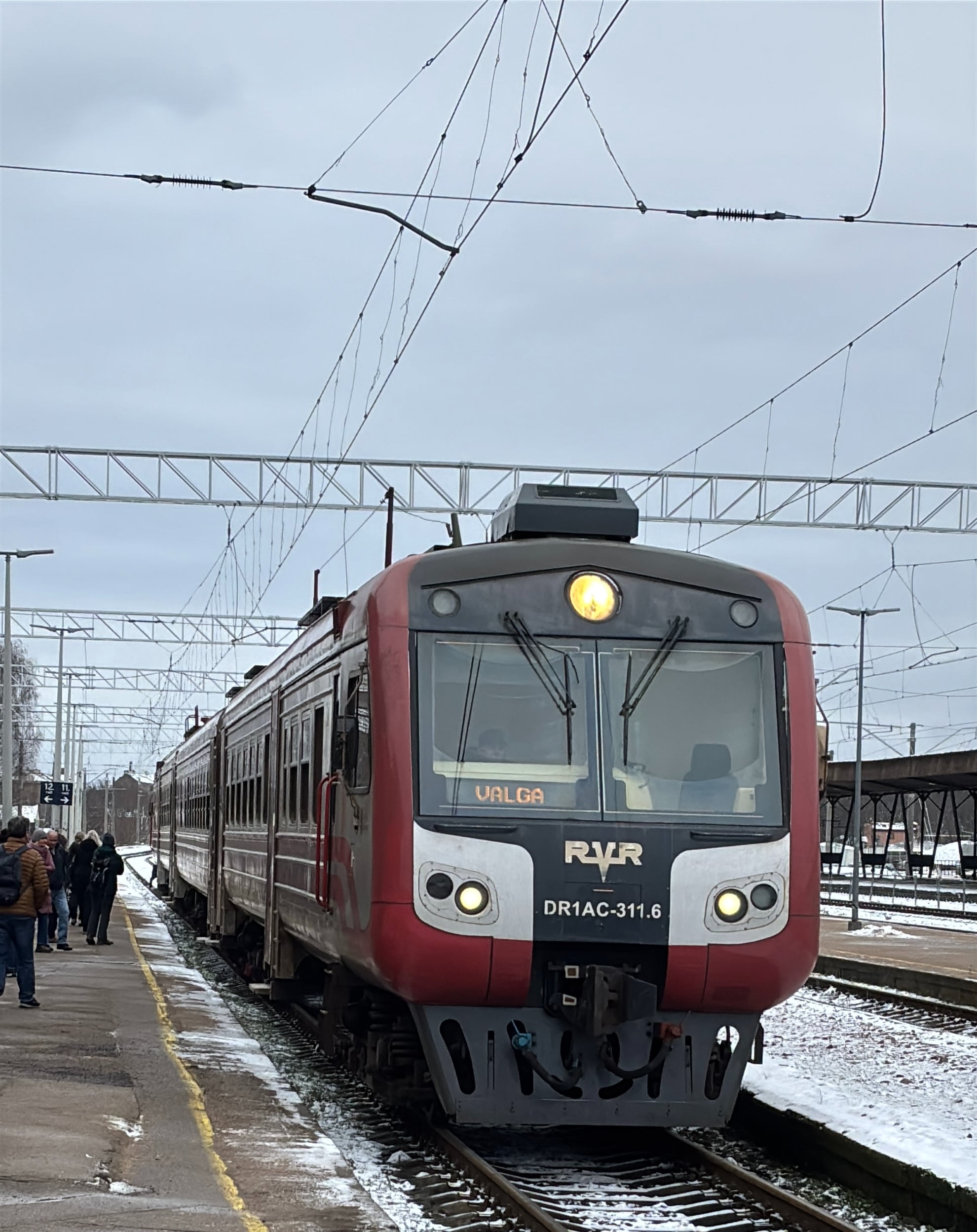
The Latvian DR1AC trainset that will take us to the border with Estonia, at Valga.
Unlike yesterday’s train I saw waiting, we’d be on board a newer DR1AC unit today. These feature free onboard WiFi, as well as comfortable reclining seats arranged 2-2, with some groups of four sharing a table between them. Coat hooks are located at each seat pair, though there is no at-seat power. There was one washroom on board, which was out of service.
We got underway on schedule at 11:16, and would stay on time all the way to Valga making 17 stops en route. There is no catering on board. As with all trains in the Baltic states you are permitted to bring your own food on board, though note that alcohol is banned.
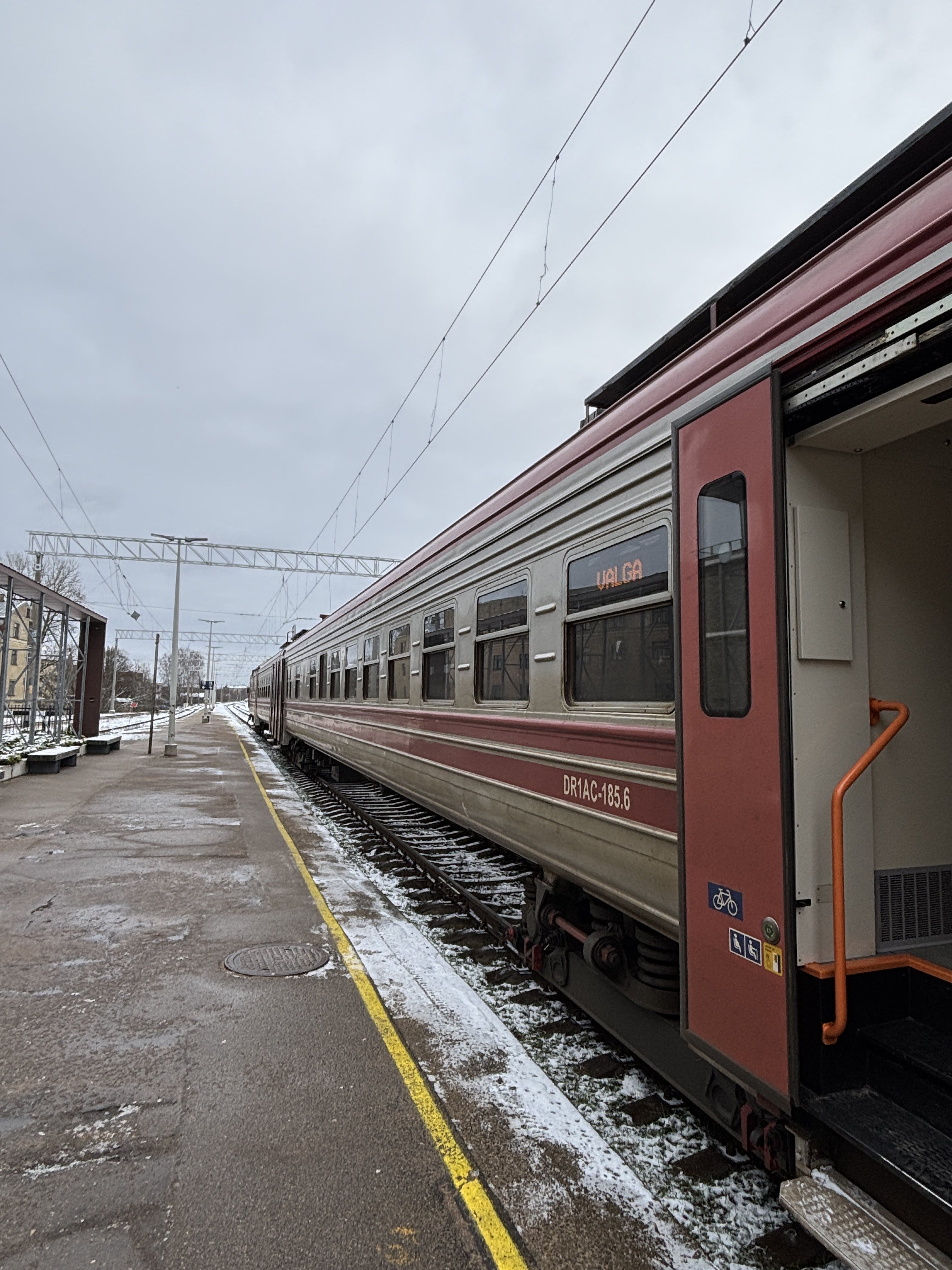
About to board at Riga.
The track wasn’t in the best condition, and despite the WiFi I found working on board to be challenging…my phone and laptop were in perpetual danger of bouncing off the tray table.
In the latter third of the journey passengers were treated to a little bit of Baltic rail history: between Valmiera and Strenči, our train passed an Estonian train making test runs for a soon-to-be-launched Tartu to Riga service. This was the first-ever train to be making this journey, and our crossing was greeted with much whistle-blowing and waving between the two crews. A few passengers on board were waiting for this moment, though for me it was an unexpected surprise and I didn’t have my camera ready. Still, great to see the excitement for a rail renaissance in this part of the world.
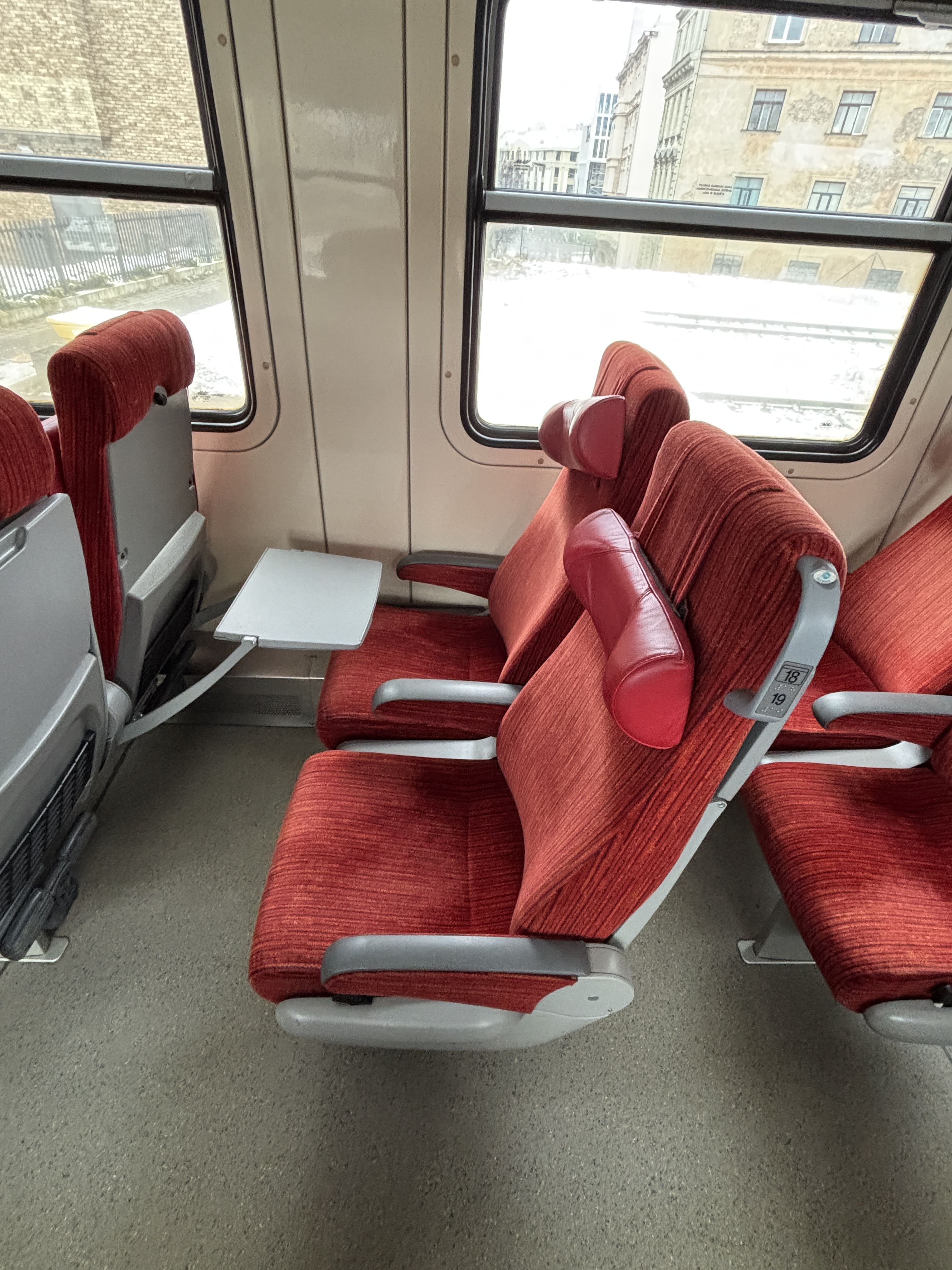
Basic but comfortable seats on the Riga-Valga service.
We arrived in Valga right on schedule at 13:51 after a journey of two hours, 35 minutes.
Total journey time so far: six hours, 37 minutes. Fare €31.
Train #3: Valga to Tartu
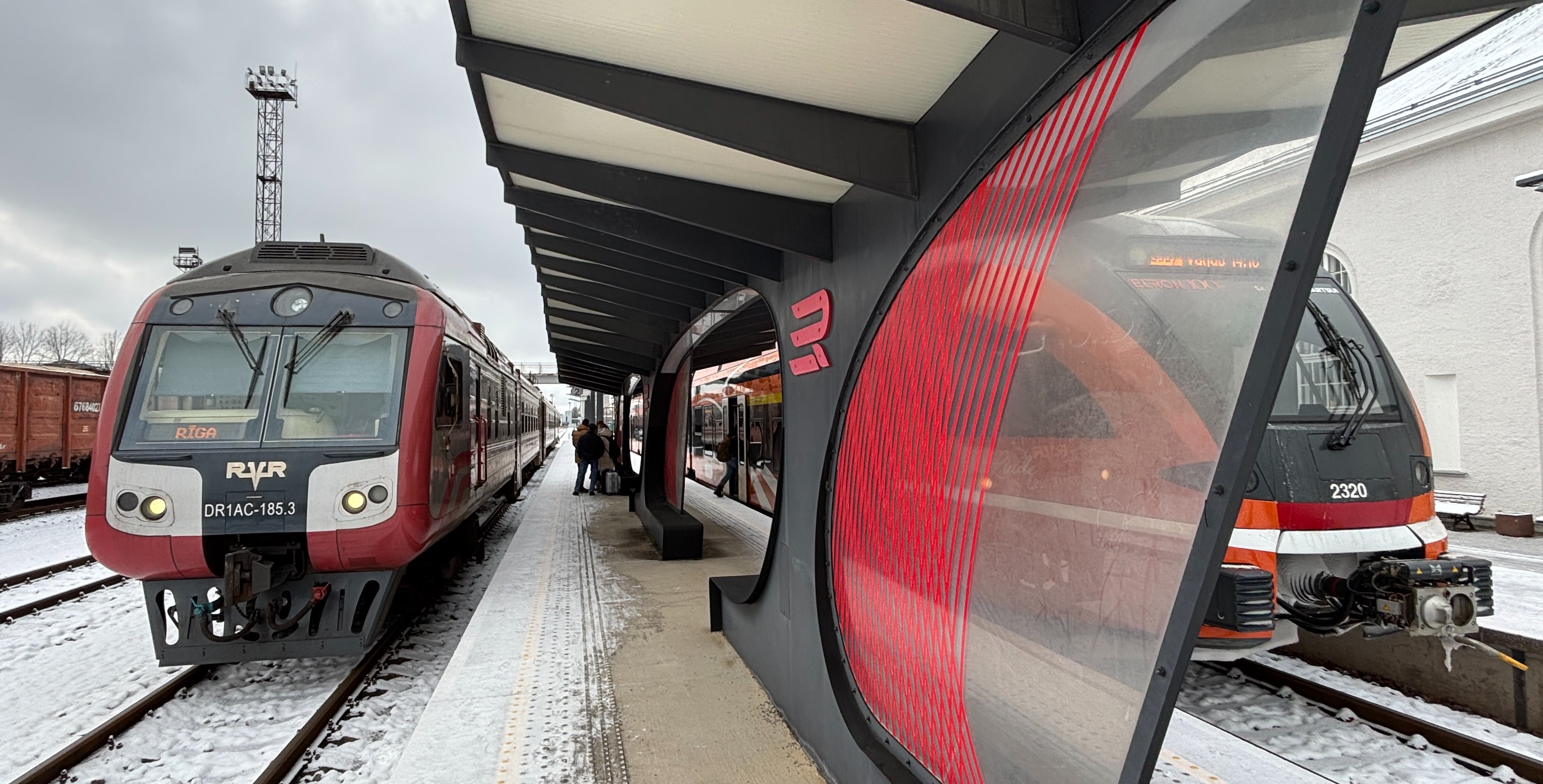
The cross-platform transfer at Valga takes only a few steps.
Waiting on the adjacent platform was a modern Stadler FLIRT trainset operated by Estonian carrier Elron that would operate the express service onwards to Tallinn, making eight stops along the way (three of which are within Tallinn, in addition to the terminus stop at Tallinn central station). We had 19 minutes before departure so I took a quick walk around the station. There wasn’t much to see, with no vendors at Valga, no staff. Washrooms are available for 50 cents (free on board the train). There are reportedly free luggage lockers available for passengers who wish to spend a few hours in Valga, though Google reviews differ as to whether these are still working.
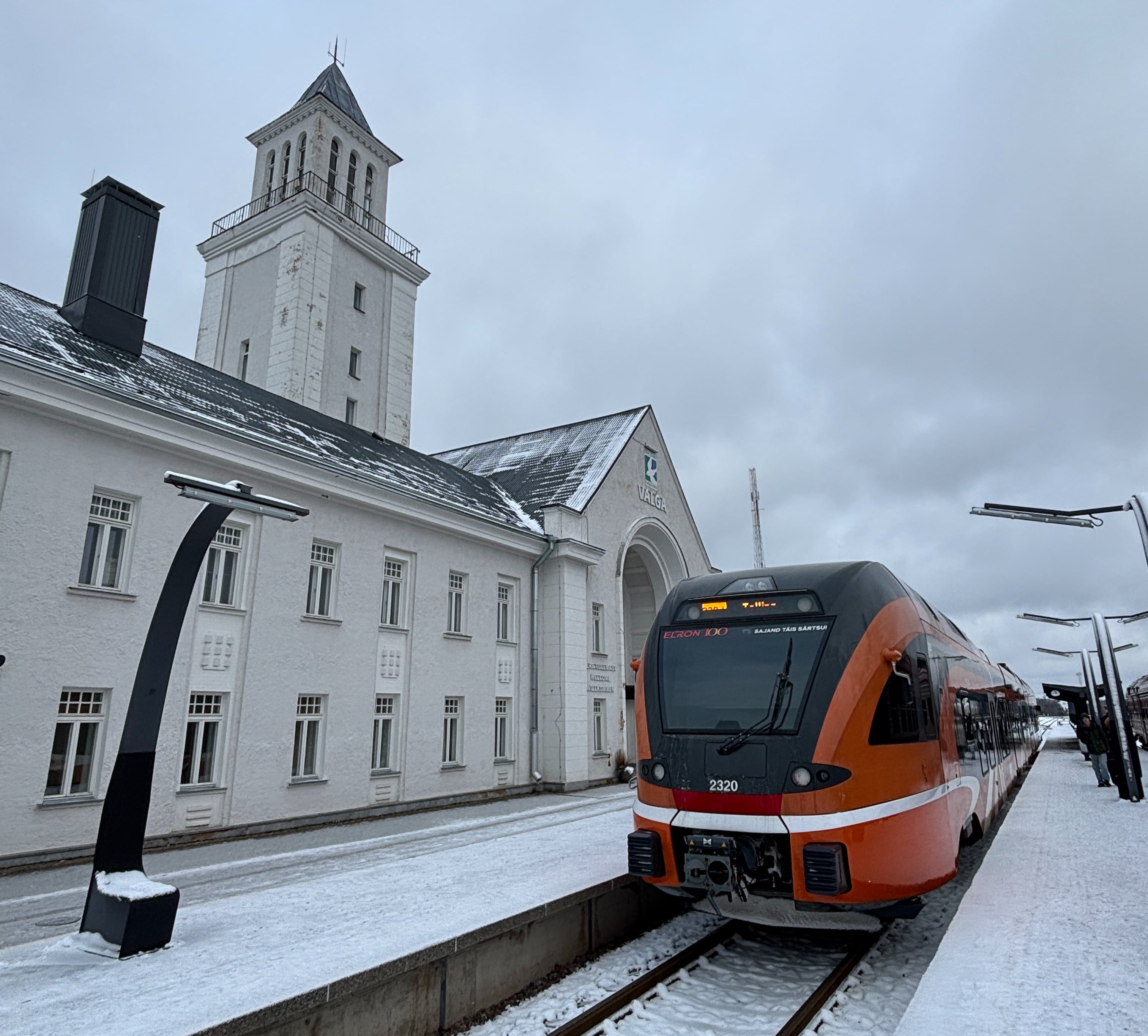
The distinctly-painted Stadler FLIRT trainset waiting as scheduled at Valga.
After walking around for a few minutes I climbed on board. Tickets can be purchased from contactless machines: tap your card (international credit cards accepted), select your destination, tap again to pay, then show your card number to the onboard inspector to validate your fare. This costs the same as purchasing online: advance bookings open 14 days ahead of departure, and are required for first class tickets. Second class seats are unassigned and cannot sell out. The fare is the same booking online or using the on-board contactless machines; buying in cash from the attendant costs slightly more (just over €1 difference if making the full journey to Tallinn).
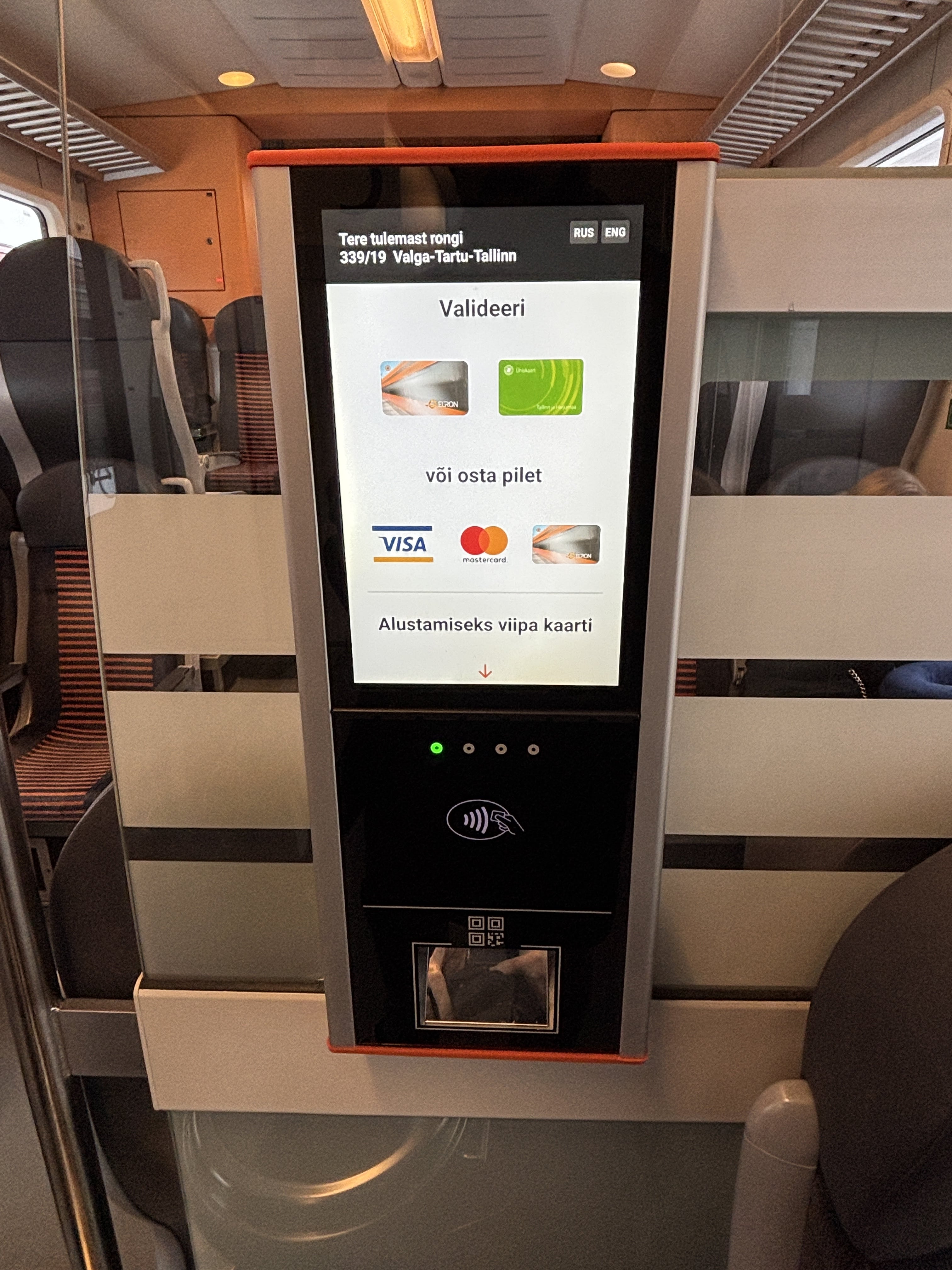
No advance purchase necessary: select your destination then tap your card on these payment machines, located next to the doors. The machines can be set to English and international cards are accepted.
First class tickets cost €4 more, and come with faster WiFi, assigned seats, and slightly more space with seats being arranged 2-2 instead of 2-3 as in second class. If travelling with a bicycle it is mandatory to purchase a separate ticket (€8.27) in the summer season, free in winter. Only four bicycle tickets are available and can sell out.
I opted to stop in Tartu, paying €5.80 for the 57-minute trip, making just one stop along the way.
Elron’s newer trains were the most comfortable so far, featuring large, clear windows, fast onboard WiFi, and at-seat power outlets, trash bins, and coat hooks. As with all trains so far, overhead space is available for anything up to a standard carry-on. Seats do not recline and there are no footrests. Legroom is ample.
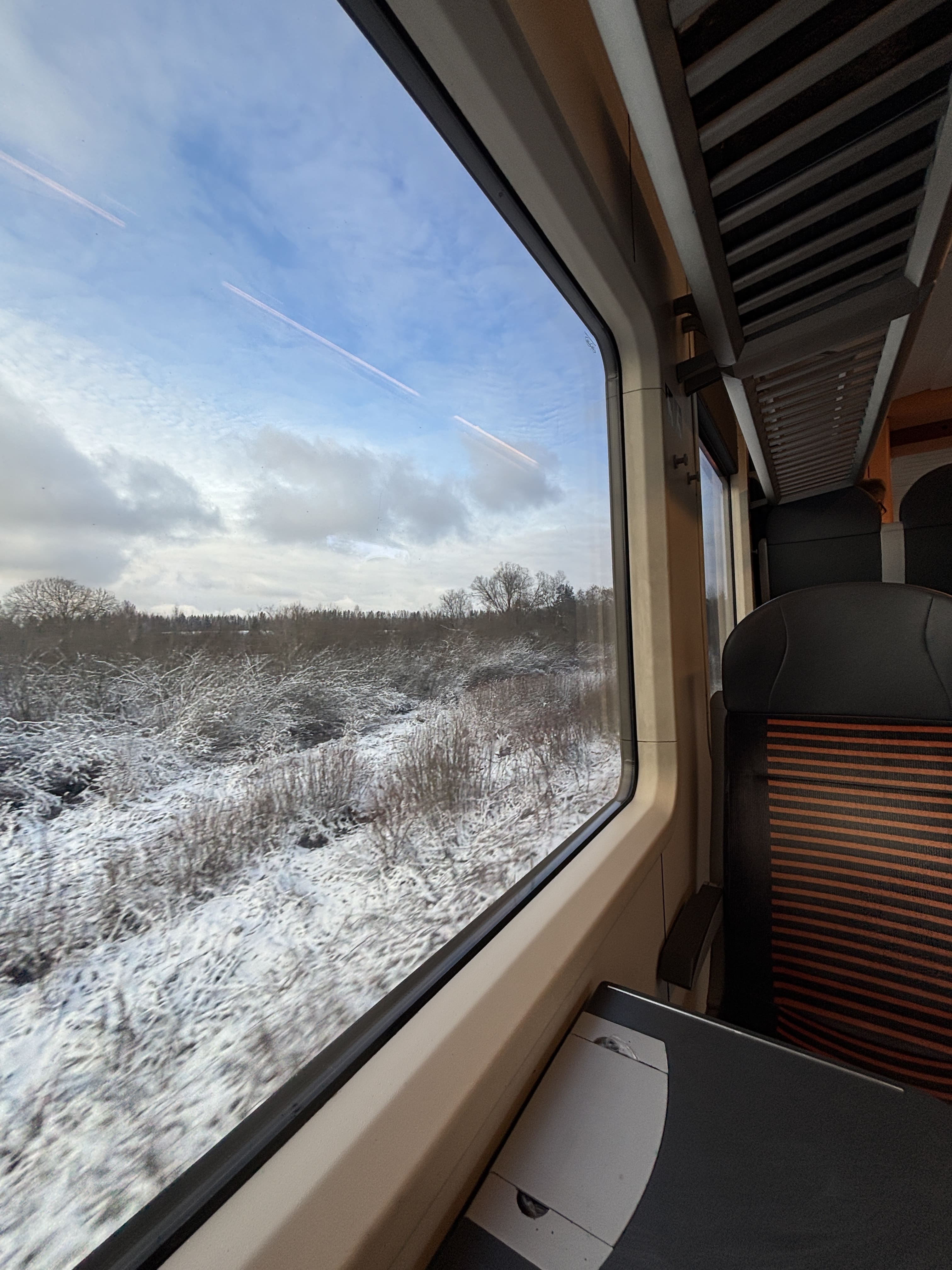
Large, clean windows offer views of the Estonian countryside pulling out of Valga.
Elron also appears to be the most excited about this new trans-Baltic service: there were multiple announcements in Estonian and English advising passengers on where to find more information, notices were posted at each station I visited, and connecting passengers at Valga were greeted with an announcement on how to purchase tickets on board.
We got underway on time at 14:10 and I spent a pleasant hour watching the winter scenery pass by.
Travel time so far: seven hours 34 minutes, fare €36.80.
Train #4: Tartu to Tallinn
Tartu station unfortunately does not have any luggage facilities, which I was expecting for a European station of this size. Still, this is one of the reasons I only travel with a carry-on whenever possible, and making the 20-minute walk into the city centre wasn’t hard with a small bag. Regular busses are also available.
I spent about three hours in Tartu, exploring the old observatory (unfortunately closed) and city centre. Picking up dinner at one of the nicest grocery stores I’ve ever been to, I made my way back to Tartu station, arriving about 15 minutes before the 18:12 service to Tallinn. Despite the lack of luggage storage, Tartu station was otherwise pleasant with a café and display of local artwork.
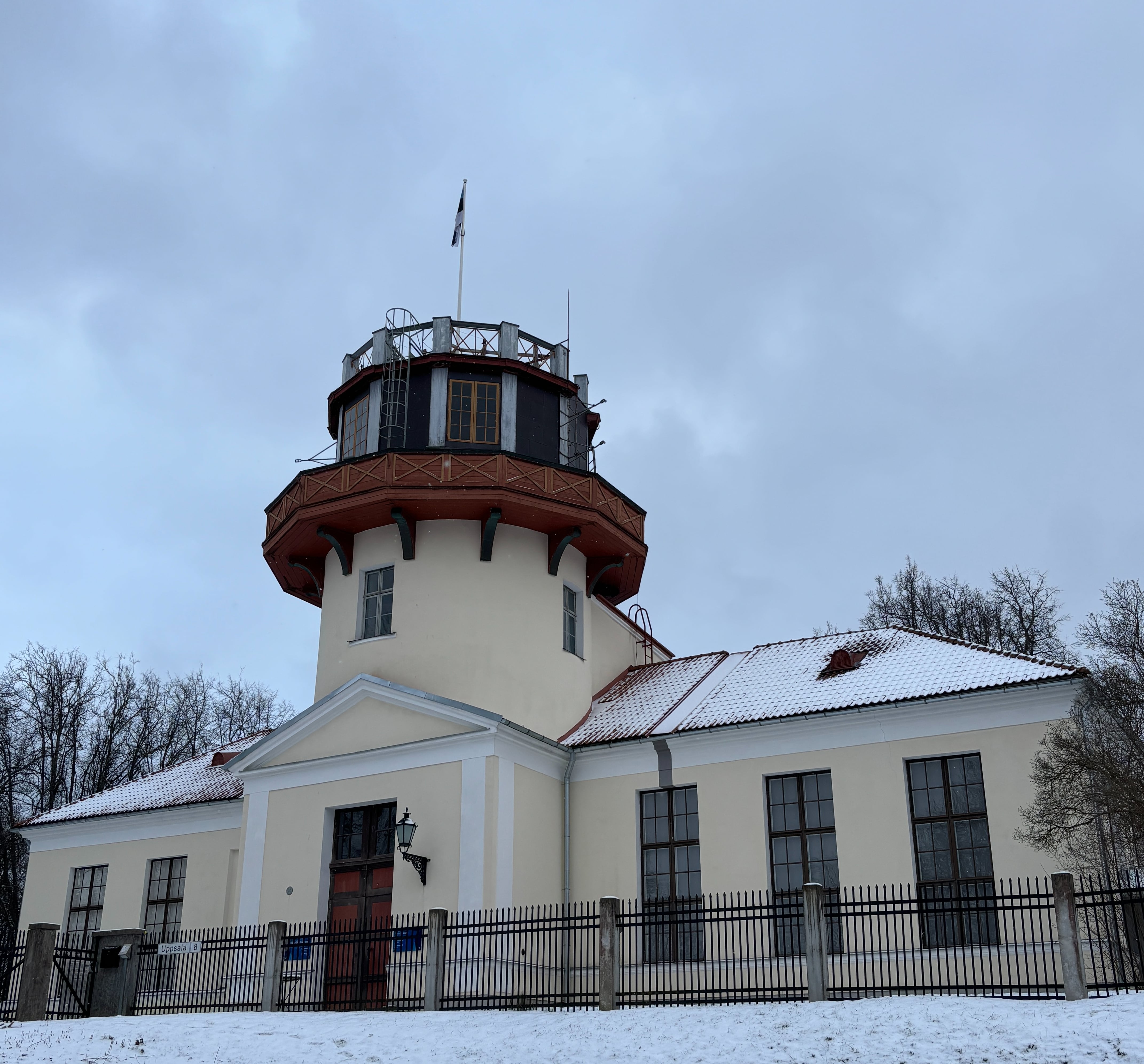
The Tartu Old Observatory, active for over a century and a half starting in 1810, is part of a UNESCO world heritage site that stretches all the way from Norway to the Black Sea.
Since this was a regional, rather than express train, I paid only €12.26 for the trip to Tallinn, which is about €3 cheaper than the express services for additional travel time of about 20 minutes.
Seats and amenities were identical to the trip from Valga; this was in fact the exact same train I had been on earlier in the day, unless there happen to be two carriages in Elron’s fleet that have a green bicycle lock someone has chained to one of the seat pillars…
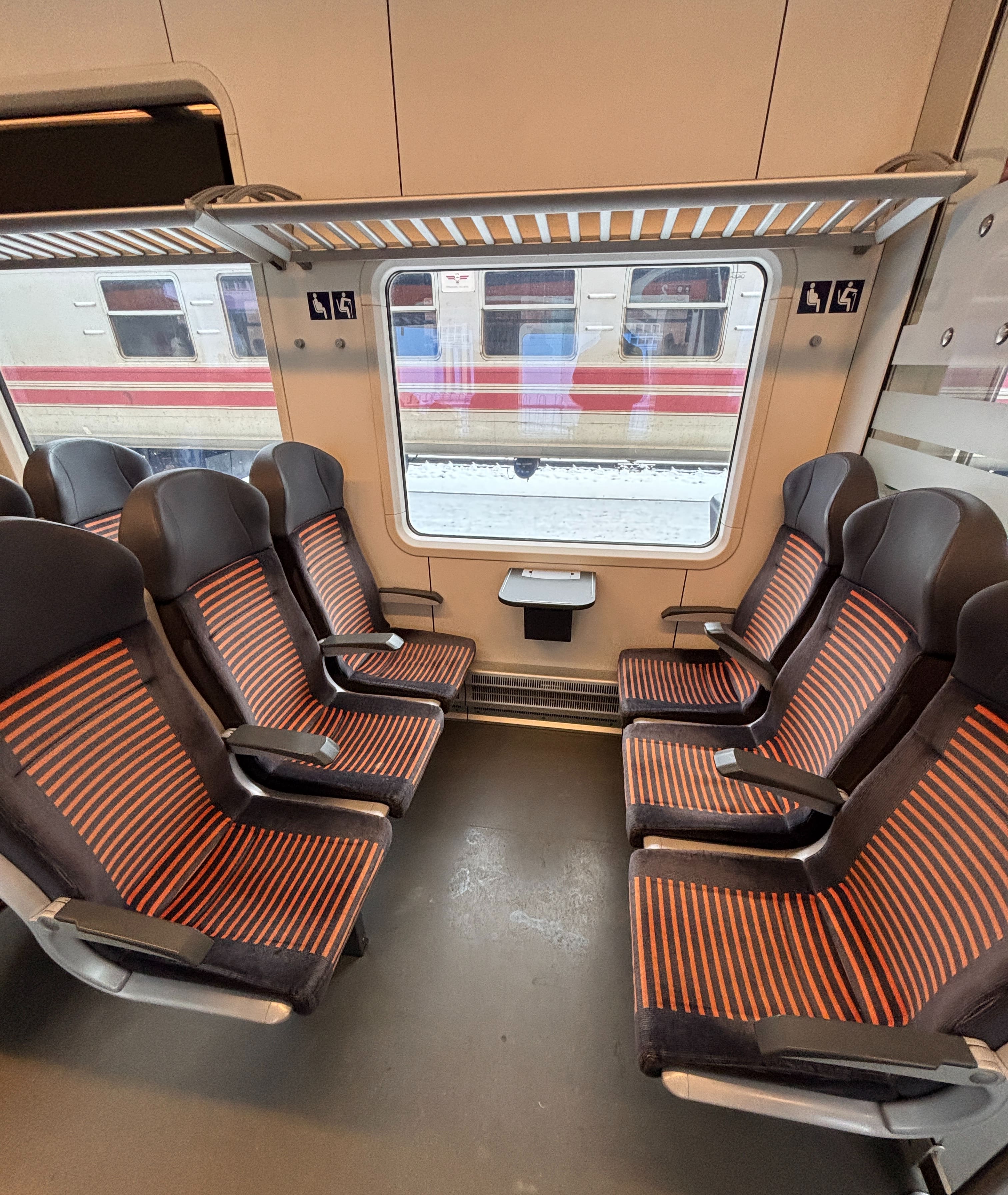
Second class seats on Elron trains running Valga-Tartu-Tallinn. Seats are arranged 2-3 in second class, 2-2 in first.
The train was fairly full leaving Tartu, and three of the five seats where I was sitting were occupied though I had the space to myself by the time we reached Tallinn. I had a leisurely dinner (as mentioned, you’re welcome to bring your own food and non-alcoholic drinks on board; no catering on this train) throughout our two hour, 46 minute trip, which was uneventful.
We pulled in on-time to Tallinn central station. Total travel time, not including connections, from Vilnius: ten hours, 20 minutes, fare €49.06.
Final Thoughts
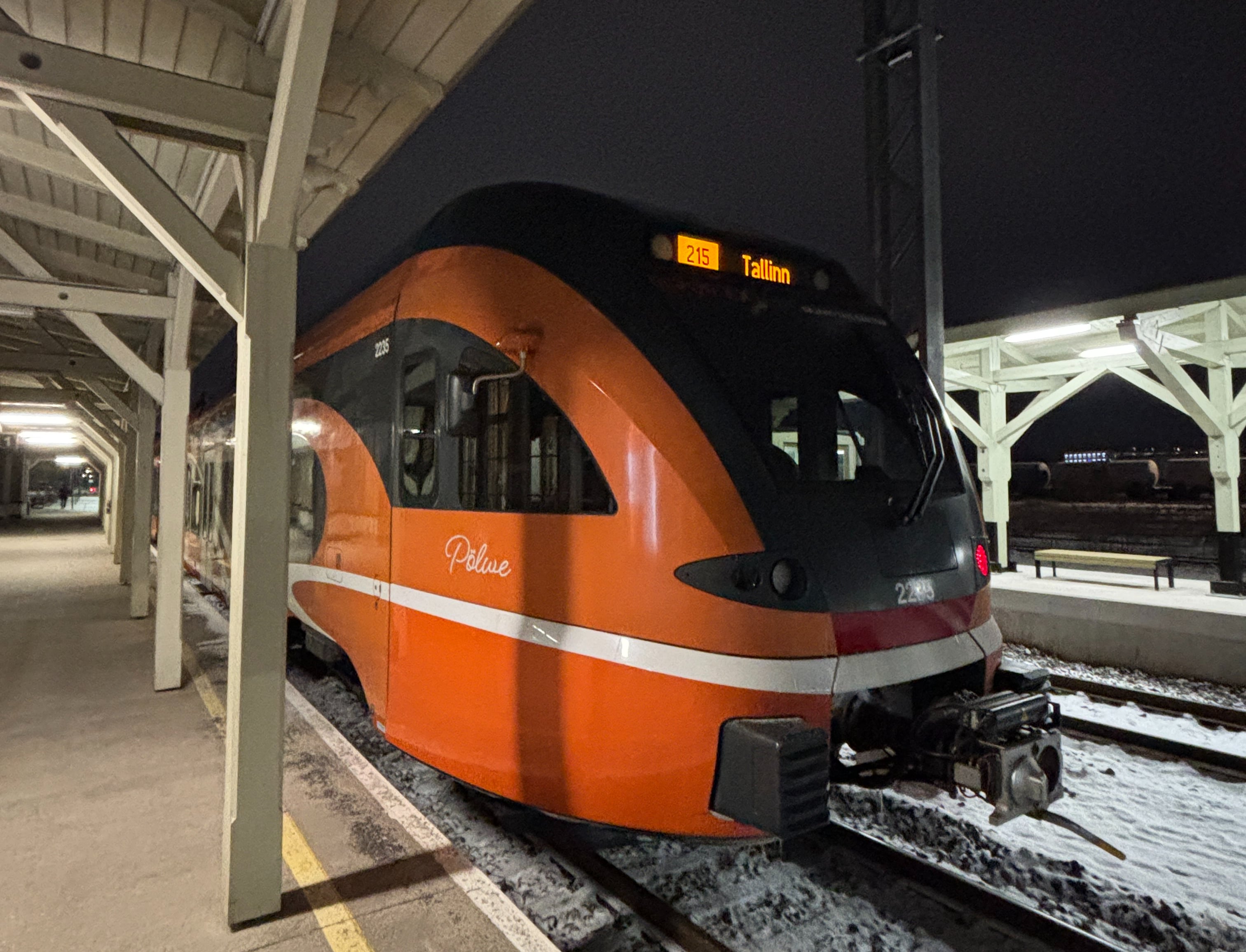
From Tartu to Tallinn: the final train on my journey across the Baltic states by rail.
This was a well-coordinated service, and making the journey in one day would not have been difficult—though I do think that misses an opportunity afforded by rail travel over flying to stop off along the way. The roundabout route (especially travelling Riga-Valga-Tartu-Tallinn instead of directly Riga-Tallinn up the coast, as busses can do) does add considerable journey time over driving, though this will be shortened once Rail Baltica is completed. In the meantime the train is still affordable (especially for last-minute travel, with fares not increasing unlike flights and busses), comfortable, convenient, and offers the chance to see more of the countries through which you’re travelling. It’s a great new service, and I hope to see rail travel in the Baltics continue to expand.